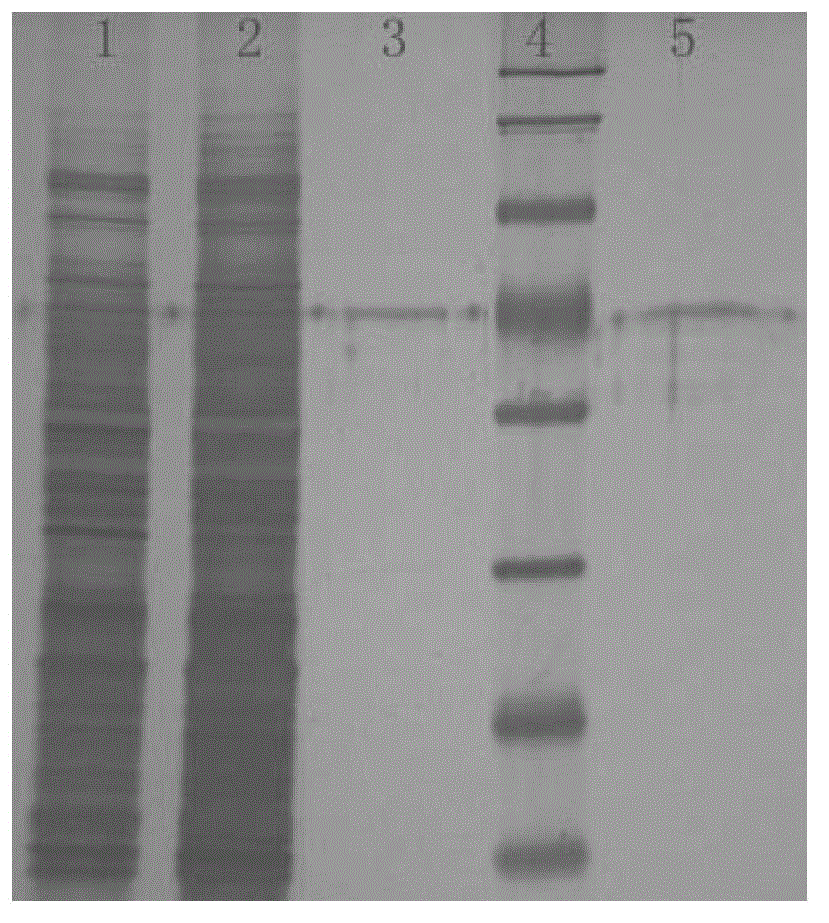Method of purifying Bt toxalbumin from insect-resistant cotton seeds
A Bt poisonous protein and insect-resistant cotton technology, applied in the field of biochemistry, can solve the problems reflecting the harm of Bt gene crops, changes in protein properties and functions, etc.
- Summary
- Abstract
- Description
- Claims
- Application Information
AI Technical Summary
Problems solved by technology
Method used
Image
Examples
preparation example Construction
[0065] Preparation method of cell culture medium: add calf serum (purchased from GIBCOBRL, catalog number 26170-043) and sodium bicarbonate to DMEM medium, the final concentration of calf serum is 20% (mass percentage content), The final concentration of sodium bicarbonate was 0.2% (mass percentage), and the pH was 7.4.
[0066] Bt Cry1Ac protein: Shanghai Youlong Biotechnology Co., Ltd., catalog number C010301.
[0067] Cotton variety Shiyuan 321: Hebei Shennong High-tech Co., Ltd.
[0068] The seeds of Guoxin Mian No. 6 (an insect-resistant variety transfected with the gene encoding the Bt Cry1Ac protein) were purchased from the Guoxin Agricultural Research Association in Hejian City, Hebei Province.
[0069] Unless otherwise specified, the PBS buffer used in this embodiment is as follows: the formula of PBS buffer (pH7.5): the solvent is water, containing 0.02M Na 2 HPO 4 、0.0015M KH 2 PO 4 and 0.14M NaCl.
Embodiment 1
[0070] Embodiment 1, purify Bt Cry1Ac protein from insect-resistant cotton seeds
[0071] 1. Extraction of total soluble protein
[0072] The seeds of Guoxin Cotton No. 6 were dehulled and ground into a fine powder. Take 10 g of the fine powder, add 100 ml of pH10.5, 0.01 MCAPS buffer, stir and extract with a magnetic stirrer at 4°C for 4 hours, and then centrifuge at 4°C and 10,000rpm for 20 Minutes, avoid the surface oil and take the upper liquid, which is the total soluble protein extract.
[0073] 2. Ammonium sulfate precipitation
[0074] Add ammonium sulfate powder to the soluble total protein extract obtained in step 1 to make its saturation in the extract reach 60%, and stir for 40 minutes in an ice bath using a magnetic stirrer.
[0075] 3. Reconstitution and dialysis of precipitate
[0076] Centrifuge the extract that completed step 2 at 4°C and 7000rpm for 20 minutes to collect the precipitate; add 2ml of deionized water to the precipitate, adjust the pH to 10.5 ...
PUM
 Login to View More
Login to View More Abstract
Description
Claims
Application Information
 Login to View More
Login to View More - R&D
- Intellectual Property
- Life Sciences
- Materials
- Tech Scout
- Unparalleled Data Quality
- Higher Quality Content
- 60% Fewer Hallucinations
Browse by: Latest US Patents, China's latest patents, Technical Efficacy Thesaurus, Application Domain, Technology Topic, Popular Technical Reports.
© 2025 PatSnap. All rights reserved.Legal|Privacy policy|Modern Slavery Act Transparency Statement|Sitemap|About US| Contact US: help@patsnap.com



